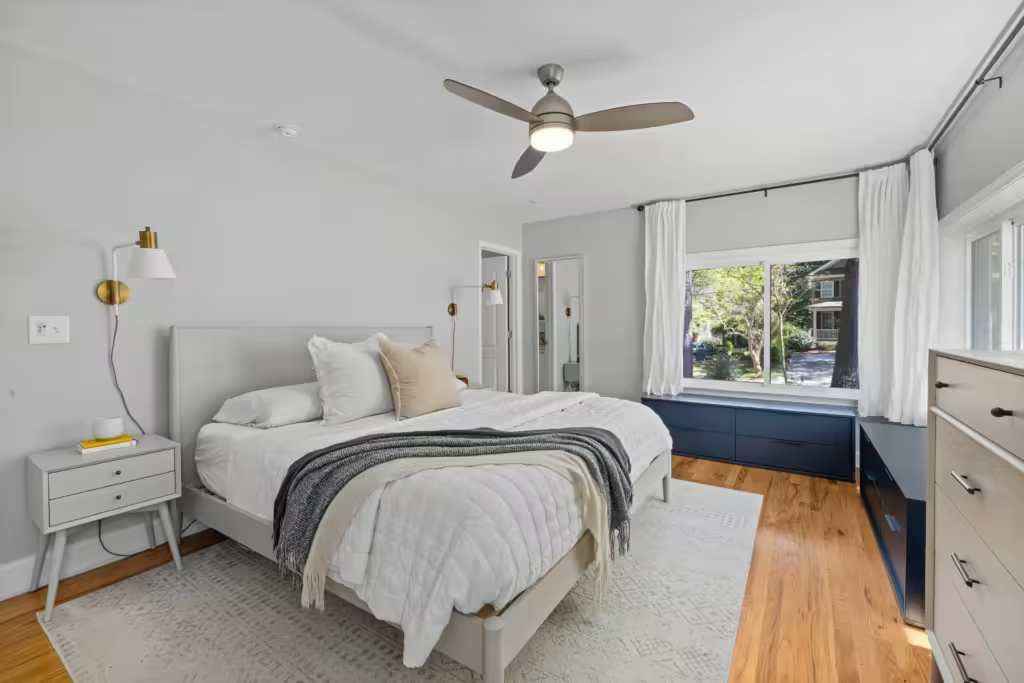Summer heat can be relentless, and running the air conditioner all day can significantly increase your energy bills. Fortunately, there are several environmentally friendly ways to keep your home cool while reducing your carbon footprint. Here are some effective green cooling strategies to help you stay comfortable while saving energy.
1. Optimize Your Home’s Insulation
Insulation isn’t just for keeping your home warm in the winter—it also helps to keep it cool in the summer by preventing heat from entering. Well-insulated walls, roofs, and attics can dramatically reduce the amount of heat that seeps into your living spaces.
- Tip: Consider upgrading to eco-friendly insulation materials such as cellulose or sheep’s wool, both of which have a low environmental impact.
2. Install Energy-Efficient Windows and Use Window Coverings
Windows are one of the biggest sources of heat gain in a home. Installing energy-efficient windows with low-emissivity (Low-E) coatings can help reflect sunlight and reduce the heat that enters your home.
- Tip: Use thick, insulated curtains, shades, or blinds to block out the sun during the hottest parts of the day. Light-colored curtains can reflect heat, while darker ones trap warmth.
3. Use Ceiling Fans or Portable Fans
Ceiling fans and portable fans are excellent energy-efficient alternatives to air conditioning. They create airflow and promote evaporation of sweat, helping you feel cooler without drastically lowering the room’s temperature. Running ceiling fans counterclockwise in the summer pushes cool air downward.
- Tip: Look for fans with an ENERGY STAR® label, which use less energy than standard models.
4. Plant Trees or Install Green Roofs
Strategically planting trees or large shrubs around your home can create natural shade that blocks sunlight from hitting your windows and roof, reducing the temperature inside. If planting trees isn’t an option, a green roof—one covered with vegetation—can absorb heat and cool your home naturally.
- Tip: Native, drought-tolerant plants are ideal, as they require less water and are more resilient in hot conditions.
5. Use Natural Ventilation
Harness the power of natural breezes to cool your home. Open windows during the cooler parts of the day, like early mornings or evenings, and create cross-ventilation by opening windows on opposite sides of your home to allow air to flow freely.
- Tip: Place fans near windows to push hot air out and bring cool air in, or install attic vents to help expel trapped heat.
6. Install Solar-Powered Attic Fans
Attics can trap a lot of heat, making the rest of your home warmer. Solar-powered attic fans can reduce the temperature in your attic by expelling hot air and preventing it from entering your living spaces. These fans are powered by the sun, making them an eco-friendly solution.
7. Switch to LED or CFL Light Bulbs
Traditional incandescent light bulbs produce heat along with light. Switching to energy-efficient LED or CFL bulbs reduces heat emissions and saves energy, keeping your home cooler while lowering your electric bill.
- Tip: Make the switch to smart lighting systems that allow you to schedule lights to turn off during the hottest parts of the day.
8. Opt for Light-Colored Roofing Materials
The color of your roof plays a significant role in how much heat your home absorbs. Dark-colored roofs absorb more heat, while light-colored or reflective materials help deflect sunlight and keep your home cooler. If you’re planning a roof replacement, opt for a cool roof that reflects more sunlight.
9. Reduce Appliance Usage
Appliances such as ovens, stoves, and dryers generate a lot of heat. In the summer, try to minimize their use, especially during the hottest times of day. Instead, consider cooking outdoors on a grill or using smaller appliances like microwaves or slow cookers that don’t heat up your home.
- Tip: Air-dry your laundry instead of using a dryer to save energy and reduce indoor heat.
10. Consider Solar Screens
Solar screens are a great addition to your windows, especially those that face the sun. These specialized window screens block up to 90% of the sun’s heat and UV rays, keeping your home cooler without compromising on natural light.
Final Thoughts
Keeping your home cool during the summer doesn’t have to mean relying solely on air conditioning. By implementing some of these eco-friendly strategies, you can reduce your energy usage, lower your cooling costs, and stay comfortable even during the hottest months. Going green with your cooling solutions is not only better for the environment but also for your wallet.
*Go back to Point B Electrical Services home page…
*Discover the latest updates, promotions, and expert electrical tips by visiting Point B Electrical Services Facebook page today!


